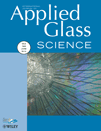
International Journal of Applied Glass Science
Scope & Guideline
Transforming Ideas into Glass Solutions
Introduction
Aims and Scopes
- Material Characterization and Properties:
The journal emphasizes the characterization of glass materials, including their structural, thermal, mechanical, and optical properties. This includes studies on the impact of various compositions and processing techniques on the performance of glass. - Glass Processing and Fabrication Techniques:
Research in this area covers the methodologies for glass manufacturing, processing, and forming, such as melt processing, sintering, and laser micromachining. This includes novel approaches to enhance efficiency and quality in glass production. - Environmental and Sustainability Aspects:
The journal addresses the environmental impact of glass production and recycling processes, exploring sustainable practices and materials that reduce the ecological footprint of the glass industry. - Innovative Applications of Glass Materials:
This scope includes the development and application of glass in various fields, such as photonics, biomedical applications, and energy technologies, highlighting the versatility of glass as a material. - Theoretical and Computational Modeling:
Research focusing on theoretical aspects and computational modeling of glass behavior, including molecular dynamics simulations and thermodynamic modeling, is a significant area of interest.
Trending and Emerging
- Sustainable Glass Manufacturing Practices:
There is a growing focus on the environmental impact of glass production and the development of sustainable practices, including recycling and the use of alternative raw materials to minimize waste. - Advanced Glass Ceramics and Composites:
Research on glass-ceramics and composite materials is trending, particularly in applications like dental materials and energy storage, highlighting the need for multifunctional materials. - Nanostructured and Functional Glasses:
The exploration of nanostructured glasses and their unique properties is gaining momentum, especially for applications in optoelectronics and sensing. - Biomedical Applications of Glass:
The use of bioactive glasses in medical applications, such as tissue engineering and drug delivery systems, is an emerging focus area, reflecting the intersection of glass science with health sciences. - Machine Learning and AI in Glass Science:
The application of artificial intelligence and machine learning techniques for modeling and predicting glass behavior and properties is becoming increasingly popular, showcasing the integration of modern computational methods into traditional glass science.
Declining or Waning
- Traditional Glass Composition Studies:
Research focused on conventional soda-lime-silica compositions has seen a reduction, as the field shifts towards more innovative glass formulations and advanced materials. - Basic Physical Properties without Application Context:
Studies that primarily focus on the fundamental physical properties of glass, without linking these properties to practical applications or implications, have become less prevalent. - Historical Glass Studies:
While historical studies remain important, there has been a noticeable decline in papers solely dedicated to historical glass artifacts, as contemporary applications and innovations gain more attention.
Similar Journals

International Journal of Minerals Metallurgy and Materials
Empowering Research Through Open Access ExcellenceThe International Journal of Minerals Metallurgy and Materials, published by SPRINGER, stands as a prominent forum in the fields of minerals, metallurgy, and materials science. With an ISSN of 1674-4799 and an E-ISSN of 1869-103X, this journal has been disseminating high-quality research since its inception in 2009 and will continue to publish until 2024. Based in China, this journal supports Open Access options, maximizing the reach and impact of scholarly work. Enhanced by its impressive Scopus rankings, it holds a Q2 position in Geochemistry and Petrology and a Q1 ranking in Materials Chemistry, Mechanical Engineering, Mechanics of Materials, and Metals and Alloys for 2023. Such accolades reflect its continual commitment to advancing knowledge in these disciplines, making it essential reading for researchers, professionals, and students aiming to stay abreast of contemporary developments and innovative solutions in materials science.
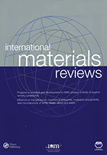
INTERNATIONAL MATERIALS REVIEWS
Advancing Knowledge in Materials Chemistry and EngineeringINTERNATIONAL MATERIALS REVIEWS, published by SAGE Publications Inc, is a leading journal dedicated to the comprehensive analysis of contemporary research in the fields of materials chemistry, mechanical engineering, mechanics of materials, and the study of metals and alloys. With an impressive impact factor and a Q1 ranking across multiple categories such as Materials Chemistry and Mechanical Engineering in 2023, it ranks amongst the top journals for innovative materials research. The journal has a long-standing history since its inception in 1987 and continues to serve as a crucial resource for academics and professionals alike. Although it is not open access, it is renowned for its rigorous peer-review process and its commitment to disseminating high-quality materials science research globally. Researchers, students, and industry professionals benefit greatly from the journal's insightful reviews, both for the advancement of theoretical knowledge and practical applications within the fast-evolving materials field.
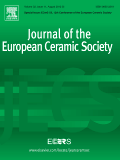
Journal of the European Ceramic Society
Elevating Knowledge in Ceramic MaterialsThe Journal of the European Ceramic Society, published by Elsevier, is a premier academic periodical dedicated to the cutting-edge advancements in the fields of ceramics and composites, as well as materials chemistry. With an impressive impact factor that places it in the top quartile (Q1) of its category, it ranks #33 out of 317 in Materials Science and #16 out of 127 in Ceramics and Composites, showcasing its strong influence in the scientific community. Established in 1989 and set to converge until 2025, this journal serves as a critical platform for researchers and professionals to disseminate their findings, share ideas, and foster collaboration in the rapidly evolving area of ceramic materials. Although it does not offer Open Access options, the journal ensures rigorous peer review and maintains high standards for publication, making it an essential resource for students, academics, and industry experts who are pushing the boundaries of material science.

Ceramics-Switzerland
Connecting Scholars and Innovators in CeramicsCeramics-Switzerland is a prominent open-access journal published by MDPI, dedicated to advancing knowledge in the field of ceramics and materials science. Established in 2018, this journal serves as a vital platform for researchers, professionals, and students to disseminate innovative research and technology in ceramics and composites. With an impressive impact factor and a categorized ranking of Q2 in Ceramics and Composites and Q3 in Miscellaneous Materials Science for 2023, Ceramics-Switzerland signifies its growing influence and contribution to the scientific community. The journal is indexed in Scopus, where it boasts a rank that highlights its competitive standing within the field. Being an open access journal enables the wide distribution of research findings, fostering greater collaboration and knowledge sharing among scholars and industry experts globally.

GLASS PHYSICS AND CHEMISTRY
Pioneering research in the world of glass materials.GLASS PHYSICS AND CHEMISTRY, published by PLEIADES PUBLISHING INC, serves as a critical platform for advancing knowledge in the fields of glass science, materials chemistry, and condensed matter physics. With a history spanning from 1996 to 2024, this journal has consistently contributed to the understanding and innovation surrounding glass materials, their properties, and applications. Despite its current Q4 categorization in several areas, the journal aims to elevate research quality and engagement, catering to researchers, professionals, and students alike. Although it does not currently offer open access, the journal encompasses peer-reviewed articles, fostering rigorous academic discourse and collaboration. With the perspective of enhancing its visibility and impact, GLASS PHYSICS AND CHEMISTRY plays an essential role in bridging theoretical insights and practical applications, ultimately addressing the evolving challenges in materials science.
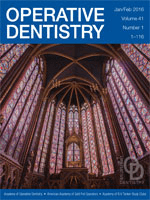
OPERATIVE DENTISTRY
Elevating Dental Practices through Cutting-Edge ResearchOPERATIVE DENTISTRY is a premier academic journal dedicated to the advancement of knowledge in the field of dentistry, particularly focusing on operative techniques, materials, and innovations. Published by OPERATIVE DENTISTRY INC, this journal holds an esteemed reputation as indicated by its classification within the Q1 quartile in Dentistry and Q2 in Medicine for 2023, and it ranks #40 out of 132 in the general dentistry category, placing it in the 70th percentile according to Scopus. With a commitment to high-quality research since its inception in 1976, the journal serves as an essential resource for researchers, practitioners, and students alike, fostering the dissemination of cutting-edge findings and developments in operative dentistry. The journal does not have an open access option; however, it provides access to a wealth of information crucial for the enhancement of clinical practice and patient care. With its headquarters located at Indiana University School of Dentistry in Indianapolis, IN, OPERATIVE DENTISTRY remains at the forefront of dental research and education.

REVIEWS ON ADVANCED MATERIALS SCIENCE
Empowering Research Through Open Access InsightsREVIEWS ON ADVANCED MATERIALS SCIENCE, published by De Gruyter Poland SP Z O O, is a preeminent open-access journal dedicated to disseminating cutting-edge research in the fields of condensed matter physics, materials science, and nanoscience. Since its inception in 2003, the journal has established itself as a crucial platform for scholars and practitioners to share innovative insights and advancements, achieving a commendable Q2 ranking in its respective categories for 2023. With its headquarters in the Russian Federation, the journal is not only committed to expanding the frontiers of scientific knowledge but also emphasizes inclusivity through its open-access model, which has been in effect since 2019, enabling universal access to its high-quality content. With an impactful standing illustrated by its Scopus rankings—136th in Condensed Matter Physics and 186th in General Materials Science—REVIEWS ON ADVANCED MATERIALS SCIENCE stands as a vital resource for researchers, professionals, and students eager to engage with contemporary discussions and discoveries in materials science.
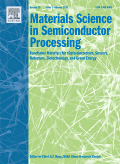
MATERIALS SCIENCE IN SEMICONDUCTOR PROCESSING
Pioneering Research for Tomorrow's ElectronicsMATERIALS SCIENCE IN SEMICONDUCTOR PROCESSING, published by ELSEVIER SCI LTD, is a premier journal dedicated to advancing knowledge in the field of semiconductor processing, an area pivotal to the development of modern electronic applications. With an ISSN of 1369-8001 and an E-ISSN of 1873-4081, this journal exemplifies excellence with a remarkable standing in various disciplines, as indicated by its 2023 Scopus rankings—occupying the top quartile (Q1) in Condensed Matter Physics and Mechanical Engineering, and Q2 in Materials Science and Mechanics of Materials. The journal not only provides a platform for high-impact original research, reviews, and significant findings but also bridges theoretical and practical implications within the field. Operating under a publication timeline that extends from 1998 to 2025, it remains an essential resource for researchers, professionals, and students seeking to deepen their understanding of semiconductor materials and processes. Although not an open-access journal, it offers robust options for access, ensuring that cutting-edge developments are made available to the scholarly community.

POWDER METALLURGY AND METAL CERAMICS
Shaping Tomorrow's Technologies through Metallurgy and CeramicsPOWDER METALLURGY AND METAL CERAMICS is a prestigious journal published by Springer, dedicated to advancing the field of powder metallurgy and the development of metal ceramics. With an ISSN of 1068-1302 and an E-ISSN of 1573-9066, this journal includes significant research contributions that explore innovative developments in materials science and engineering. Since its inception in 1993, it has garnered attention within multiple disciplines, consistently ranking in the Q2 and Q3 quartiles across categories such as Metals and Alloys, Ceramics and Composites, and Mechanics of Materials. The journal offers valuable insights into the synthesis, characterization, and applications of advanced materials, making it an essential platform for researchers, professionals, and students aiming to stay at the forefront of technological advancements in this dynamic field. Although not currently offering open access, the journal remains a critical resource for disseminating high-quality research that influences both academia and industry.

Conimbriga-Revista de Arqueologia
Illuminating the Past with Cutting-Edge Archaeological StudiesConimbriga-Revista de Arqueologia is a distinguished open-access journal dedicated to the field of archaeology, published by COIMBRA UNIVERSITY PRESS. Since its inception, the journal has fostered a vibrant intellectual community focused on the exploration and dissemination of archaeological research, particularly emphasizing studies relevant to the rich historical and cultural heritage of Portugal and beyond. With its open access model established in 2014, it has become a vital resource for researchers, professionals, and students to share their findings without access barriers, encouraging collaboration and knowledge exchange. Despite the absence of specific metrics such as the HIndex and Scopus rankings, the journal is recognized for its commitment to high-quality scholarship and its role in advancing archaeological discourse. Positioned within the scholarly landscape, Conimbriga-Revista de Arqueologia serves as a crucial platform for the publication of innovative research, reviews, and critical essays, making it an essential journal for those invested in the archaeological sciences.